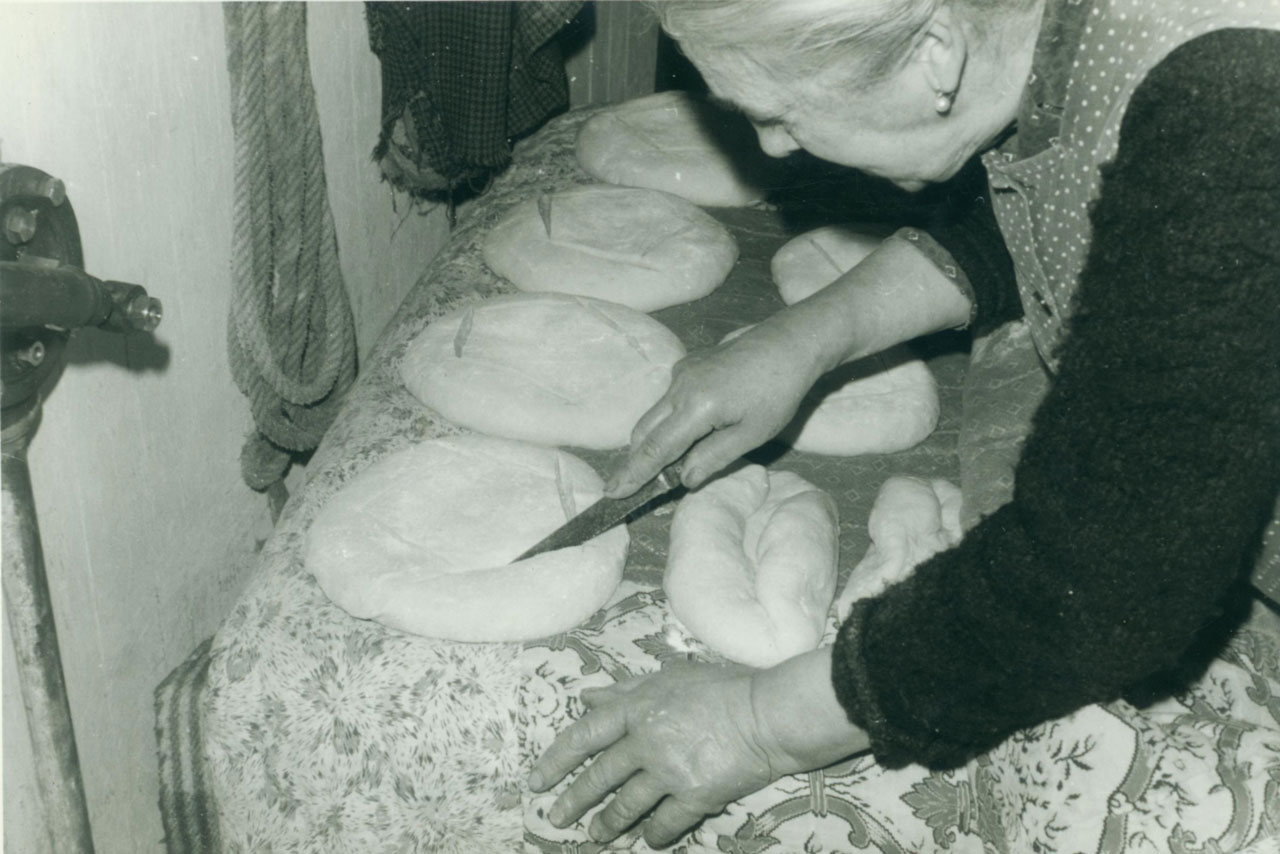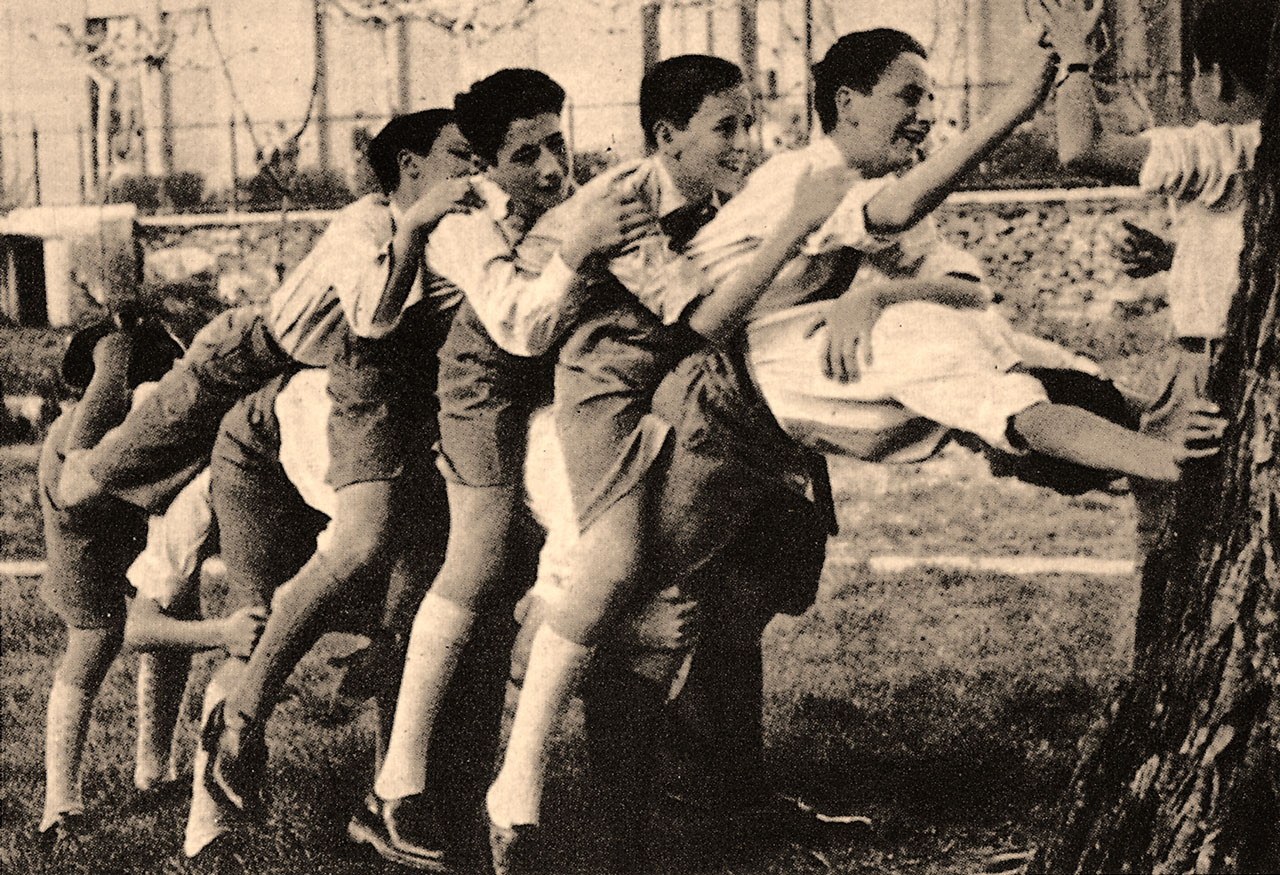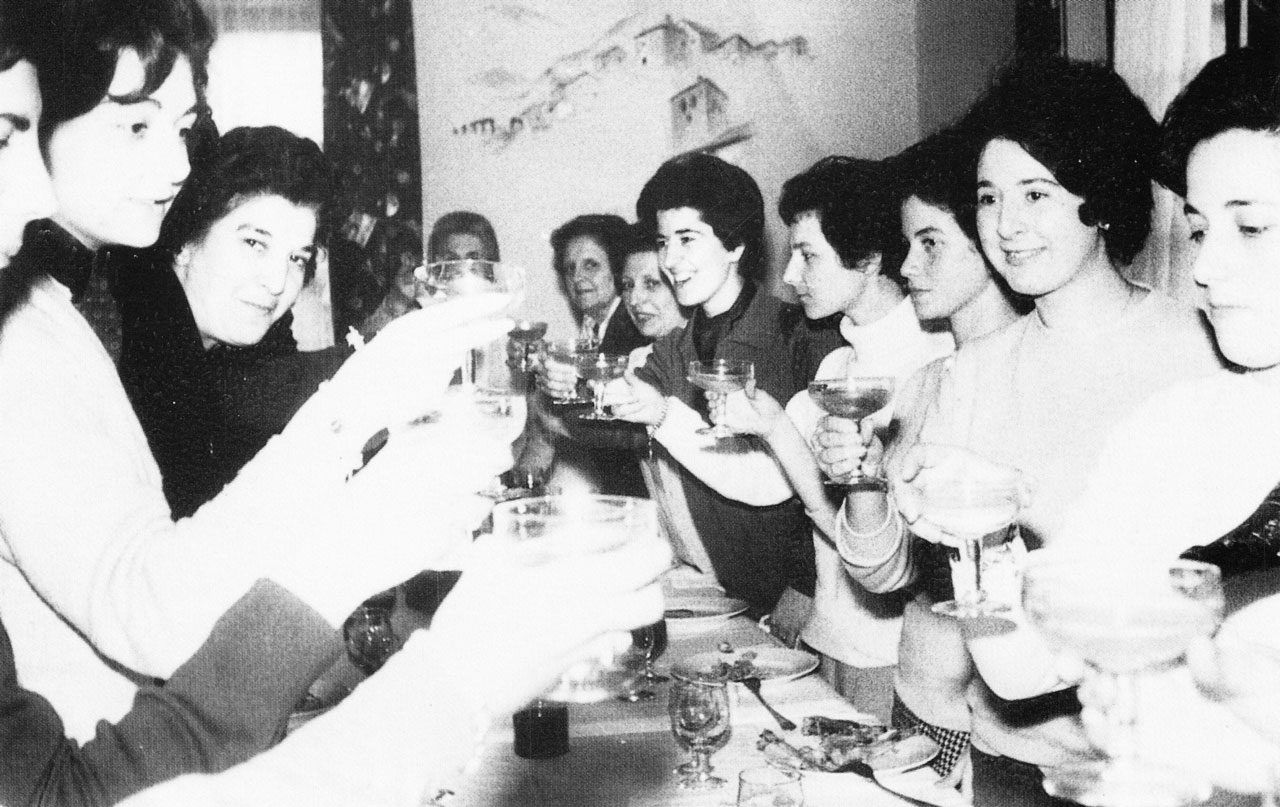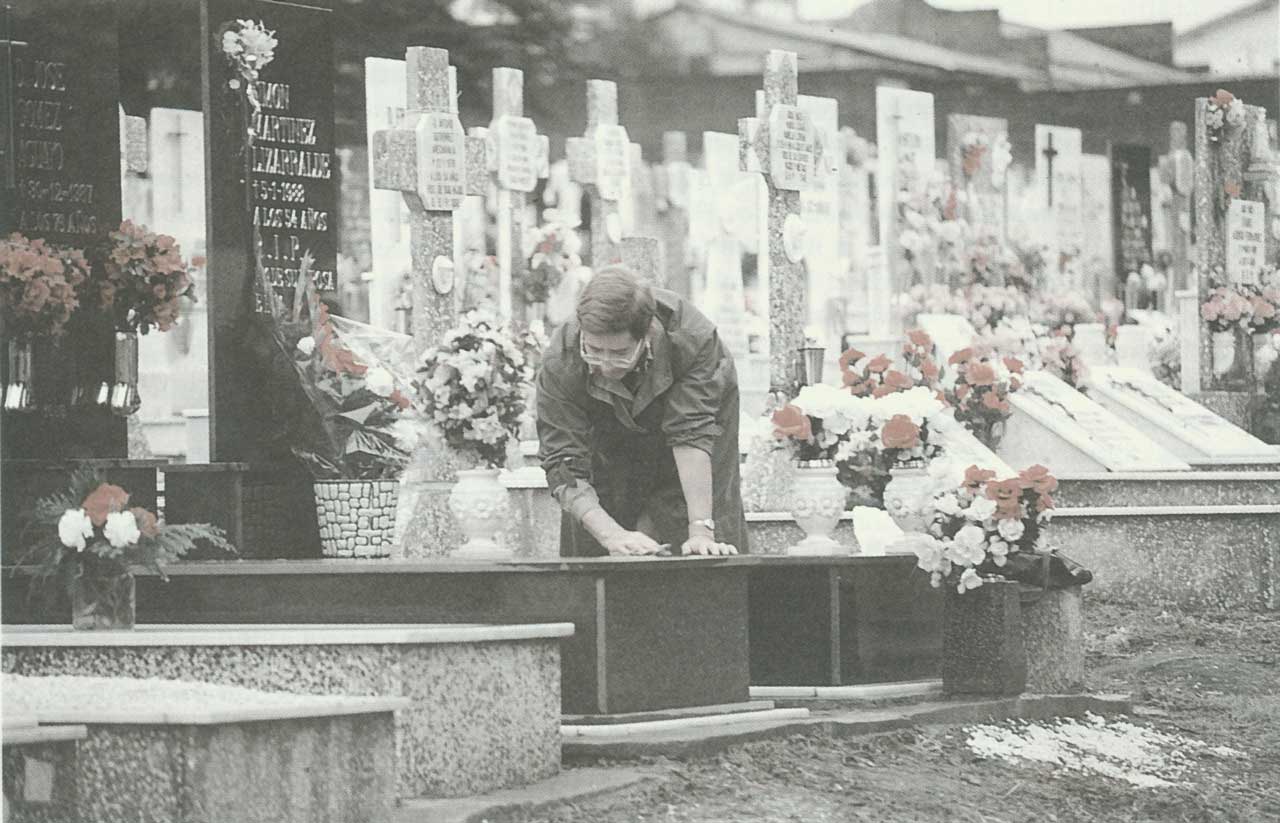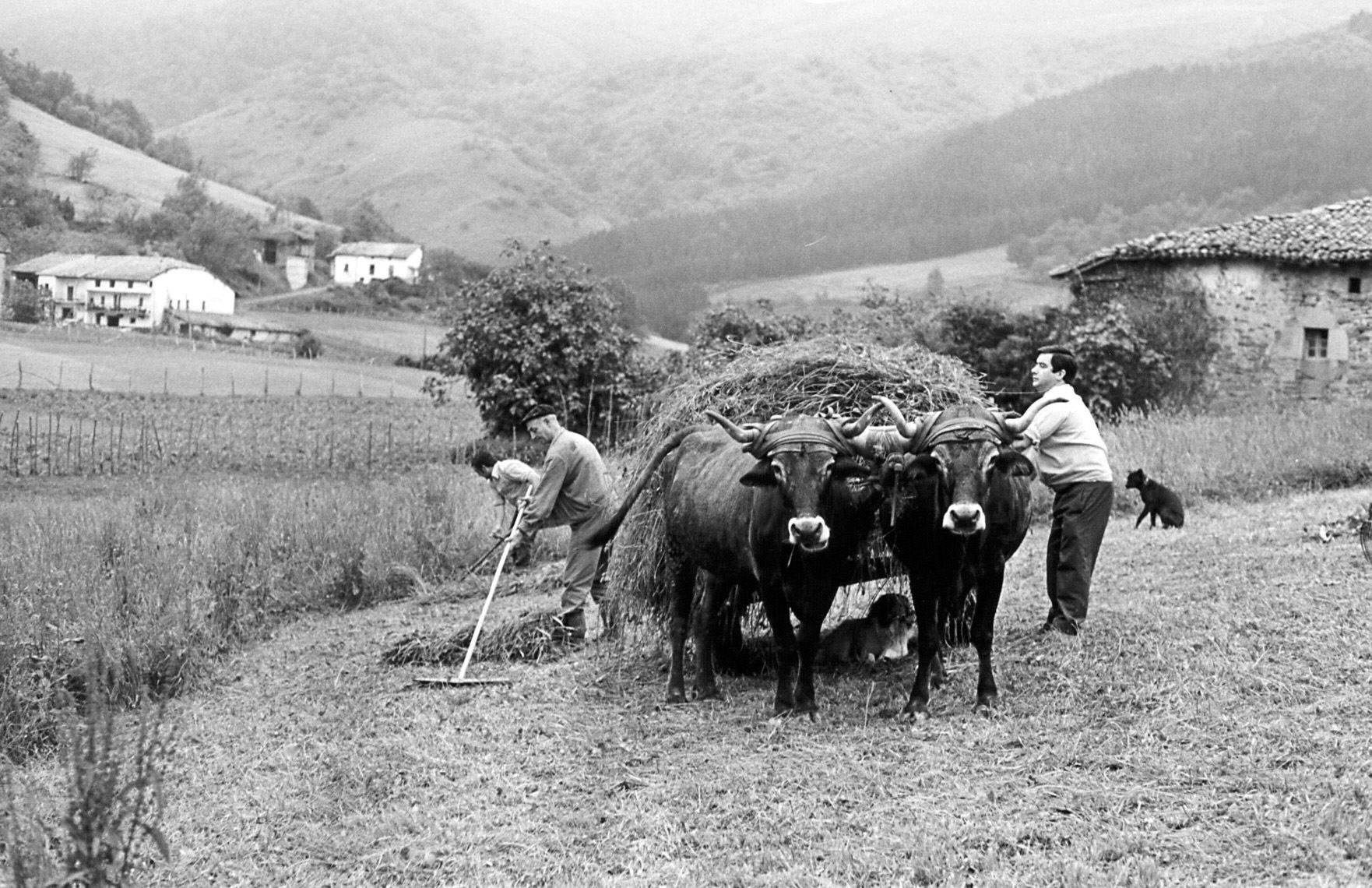Diferencia entre revisiones de «Main Page/en»
De Atlas Etnográfico de Vasconia
| Línea 155: | Línea 155: | ||
| − | ====[/atlas/nacimiento/Familia-troncal-Castillo-Elejabeitia-1930.jpg| | + | ====[/atlas/nacimiento/Familia-troncal-Castillo-Elejabeitia-1930.jpg|Nuclear family. Artea (B), c. 1930. Source: Labayru Fundazioa Photograhic Archive: Felipe Manterola Collection.|Any bachelor, or spinster, traditionally continued to be linked to the homestead and to be an integral part of the family.||ENLACE]==== |
| − | ====[/atlas/nacimiento/Seintzaina-Zeanuri-1924.jpg| | + | |
| − | ====[/atlas/nacimiento/Mozas-en-el-paseo-Aoiz-1950.jpg| | + | ====[/atlas/nacimiento/Seintzaina-Zeanuri-1924.jpg|Nursemaid. Zeanuri (B), 1924. Source: Labayru Fundazioa Photograhic Archive: Felipe Manterola Collection.|Until the mid-twentieth century women gave birth at home with the help of a midwife and women relatives and neighbours. Giving birth was almost exclusively a female domestic occasion exclusively concerning females.||ENLACE]==== |
| − | ====[/atlas/nacimiento/Despedida-de-soltera-Durango-1960.jpg| | + | |
| − | ====[/atlas/nacimiento/Bautismo-Bilbao.jpg| | + | ====[/atlas/nacimiento/Mozas-en-el-paseo-Aoiz-1950.jpg|Promenading. Aoiz (N), 1950. Source: Pilar Sáez de Albéniz, Etniker Euskalerria Groups.|Neskazaharrak joaten dira <br />Madalenara, <br />santuari eskatzera <br />senar on bana. <br /><br />''Folk song''||ENLACE]==== |
| − | ====[/atlas/nacimiento/Etxebarri-1968.jpg|Etxebarri (B), 1968. | + | |
| − | ====[/atlas/nacimiento/Entrada-en-el-templo-Getxo-1996.jpg| | + | ====[/atlas/nacimiento/Despedida-de-soltera-Durango-1960.jpg|Single farewell. Durango (B), 1960. Source: Gurutzi Arregi, Etniker Euskalerria Groups.|The transfer of the chattels was a ritualised act of great importance as it marked the entry of the new spouse in the home, ''etxe-sartzea''.||ENLACE]==== |
| − | ====[/atlas/nacimiento/Mozas-en-el-paseo-Aoiz-1950.jpg| | + | |
| − | ====[/atlas/nacimiento/Urduliz-1984.jpg|Urduliz (B), 1984. | + | ====[/atlas/nacimiento/Bautismo-Bilbao.jpg|Baptism. Bilbao. Source: Edurne Romarate, Etniker Euskalerria Groups.|After giving birth, women would remain confined for a period that ended with the rite of being churched, ''elizan sartzea''.||ENLACE]==== |
| − | ====[/atlas/nacimiento/Boloak-Zerain-1970.jpg| | + | |
| − | ====[/atlas/nacimiento/Bilbao-1995.jpg|Bilbao, 1995. | + | ====[/atlas/nacimiento/Etxebarri-1968.jpg|Etxebarri (B), 1968. Source: Edurne Romarate, Etniker Euskalerria Groups.|Maritxu-teilatuko, <br />gona gorriduna, <br />eutsi hagin zaharra <br />ta ekarzu barria. <br /><br />''Popular recitation''||ENLACE]==== |
| − | ====[/atlas/nacimiento/Pasacalles-Sanguesa-1960.jpg| | + | |
| + | ====[/atlas/nacimiento/Entrada-en-el-templo-Getxo-1996.jpg|Bride’s entrance in church. Getxo (B), 1996. Source: Labayru Fundazioa Photograhic Archive.|Ezkon urte, ero urte. <br />''People go crazy in the year they wed.''||ENLACE]==== | ||
| + | |||
| + | ====[/atlas/nacimiento/Mozas-en-el-paseo-Aoiz-1950.jpg|Offering to the departed. Donostia, 1958. Source: Segundo Oar-Arteta, Etniker Euskalerria Groups.|Ezkonberri, etxe berri. <br />''A married person wants a house.''||ENLACE]==== | ||
| + | |||
| + | ====[/atlas/nacimiento/Urduliz-1984.jpg|Urduliz (B), 1984. Source: Akaitze Kamiruaga, Etniker Euskalerria Groups.|Haurrak negarrik ez, titirik ez. <br />''A baby who does not cry, does not suckle.''||ENLACE]==== | ||
| + | |||
| + | ====[/atlas/nacimiento/Boloak-Zerain-1970.jpg|Baptism celebration. Zerain (G), 1970. Source: Karmele Goñi, Etniker Euskalerria Groups.|Haurraren jaiotza, etxerako poza. <br />''A house without children is a flowerpot without flowers.''||ENLACE]==== | ||
| + | |||
| + | ====[/atlas/nacimiento/Bilbao-1995.jpg|Bilbao, 1995. Source: Asier Astigarraga’s private archive.|Charms, ''kutunak'', were attached to children’s clothes and were said to protect them from the evil eye.||ENLACE]==== | ||
| + | |||
| + | ====[/atlas/nacimiento/Pasacalles-Sanguesa-1960.jpg|Passacaglia. Sangüesa (N), c. 1960. Source: Juan Cruz Labeaga, Etniker Euskalerria Groups.|Gazteak, badakizue <br />zelan dantzan egin: <br />burua gora-gora <br />ta kaderai eragin. <br /><br />''Folk verse''||ENLACE]==== | ||
Revisión del 12:40 27 ene 2020
Cooking on the hearth. Apellániz (A), 1981. Source: López de Guereñu, Gerardo. “Apellániz. Pasado y presente de un pueblo alavés” in Ohitura 0, Vitoria-Gasteiz: Chartered Government of Álava, 1981.
House and Family in the Basque Country


House and Family in the Basque Country
The kitchen in the farmsteads was where people would usually gather together and was at the heart of family life.
Family Diet in the Basque Country


Family Diet in the Basque Country
Donde no hay ni pan ni pollos, el horno no está para bollos. If there’s no bread or chicken, you shouldn’t bake rolls.
Group of children. Zeanuri (B), 1920. Source: Labayru Fundazioa Photograhic Archive: Felipe Manterola Collection.
Children’s Games in the Basque Country


Children’s Games in the Basque Country
Children in the traditional society, both in towns and in countryside, only really had the toys that they made themselves. Games were more common than toys, and the latter were just a basis for the former.
Traditional Medicine in the Basque Country


Traditional Medicine in the Basque Country
Kirkila bat eta kirkila bi, kirkilak dira hamabi: hamabitik hamaikara, hamaikatik hamarrera, hamarretik bederatzira, bederatzitik zortzira, zortzitik zazpira, zazpitik seira, seitik bostera, bostetik laura, lautik hirura, hirutik bira, bitik batera, batetik bapezera. Formula for scrofula treatment
Rites from Birth to Marriage in the Basque Country


Rites from Birth to Marriage in the Basque Country
The transfer of the chattels was a ritualised act of great importance as it marked the entry of the new spouse in the home, etxe-sartzea.
Ritos funerarios en Vasconia


Ritos funerarios en Vasconia
Entre otros presagios de muerte destacan los asociados con los comportamientos anómalos de algunos animales domésticos, fundamentalmente perros y gallos.
Ganaderia y pastoreo en Vasconia


Ganaderia y pastoreo en Vasconia
Artaldearentzat artzain guti hobe ainitz baino. Donde muchos mandan, ninguno obedece, y todo perece.
Agricultura en Vasconia


Agricultura en Vasconia
Este saber agrícola tradicional nacía del profundo vínculo que se establecía con la tierra, y es que en una economía basada en el autoabastecimiento no cabía más posibilidad que ser respetuoso con la misma.

